 I woke up bright and early and braved the morning chill to run down to one of the local bakeries (boulangeries), Pâtisserie Traiteur, to buy two fresh croissants and a pain suisse. I think I was wholly addicted to French baked goods at first bite; I don't believe I will ever forget my first mouthful of flaky, buttery croissant. While I went to the bakery, Mommy made coffee and we enjoyed our first French breakfast before heading out into the city.
I woke up bright and early and braved the morning chill to run down to one of the local bakeries (boulangeries), Pâtisserie Traiteur, to buy two fresh croissants and a pain suisse. I think I was wholly addicted to French baked goods at first bite; I don't believe I will ever forget my first mouthful of flaky, buttery croissant. While I went to the bakery, Mommy made coffee and we enjoyed our first French breakfast before heading out into the city.
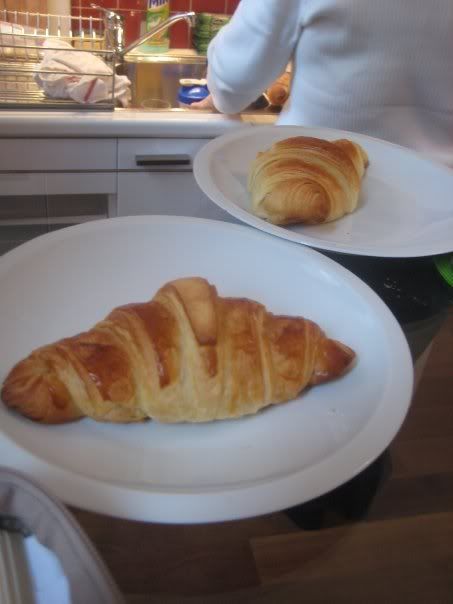 In our search for a phone the night before, we found a métro stop, Bourse, that was much closer than that recommended by Giovanni. We took the métro to pl. du Châtelet - my première glimpse of downtown Paris - to start a walking tour. To my delight, Mommy had picked out a fabulous series of books of walking tours of Paris before our trip. You could see the medieval towers of La Conciergerie across the bridge from pl. du Châtelet where we stood at the fountain surrounded by stone sphinx. We strolled down quai de la megisserie and back again, looking in pet store windows at adorable puppies and smelling flowers outside florists' shops, ironically on a street that used be lined by butcher shops.
In our search for a phone the night before, we found a métro stop, Bourse, that was much closer than that recommended by Giovanni. We took the métro to pl. du Châtelet - my première glimpse of downtown Paris - to start a walking tour. To my delight, Mommy had picked out a fabulous series of books of walking tours of Paris before our trip. You could see the medieval towers of La Conciergerie across the bridge from pl. du Châtelet where we stood at the fountain surrounded by stone sphinx. We strolled down quai de la megisserie and back again, looking in pet store windows at adorable puppies and smelling flowers outside florists' shops, ironically on a street that used be lined by butcher shops.

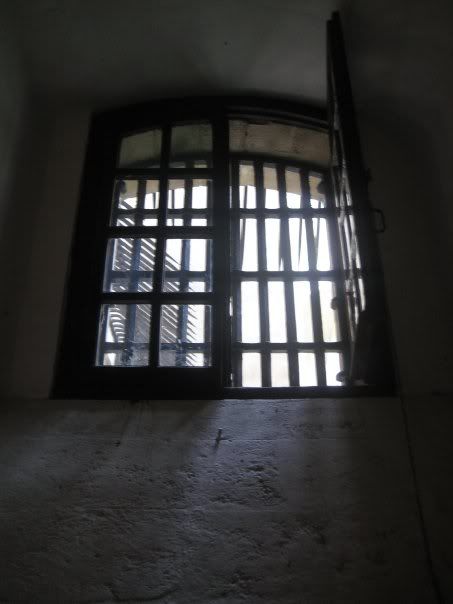
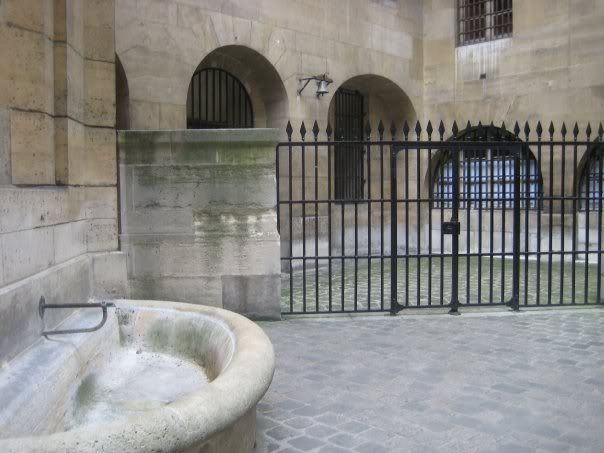 Next, we crossed the bridge to visit La Conciergerie. Originally the palace of the French kings, it was vacated by the royal family after one king endured the scarring episode of seeing his ministers' throats slit when he was (unsuccessfully) attacked there during an (equally passionate but unsuccessful) uprising. The sturdy medieval building was then converted to a prison for use during the Revolution, when Robespierre presided over trials where the kings used to dine. Marie Antoinette was also held there until her death - you can see her "apartments" - and Robespierre spend a few of his final hours there before he was taken elsewhere to die, crushed by the unstoppable machinery of the Revolution.
Next, we crossed the bridge to visit La Conciergerie. Originally the palace of the French kings, it was vacated by the royal family after one king endured the scarring episode of seeing his ministers' throats slit when he was (unsuccessfully) attacked there during an (equally passionate but unsuccessful) uprising. The sturdy medieval building was then converted to a prison for use during the Revolution, when Robespierre presided over trials where the kings used to dine. Marie Antoinette was also held there until her death - you can see her "apartments" - and Robespierre spend a few of his final hours there before he was taken elsewhere to die, crushed by the unstoppable machinery of the Revolution. On our way out, we found out from a Jason-Statham-esque "bouncer" that Sainte Chapelle was close for an hour or two. So we continued on our walking tour via a cafe nearby, where we paused for café au lait.
On our way out, we found out from a Jason-Statham-esque "bouncer" that Sainte Chapelle was close for an hour or two. So we continued on our walking tour via a cafe nearby, where we paused for café au lait.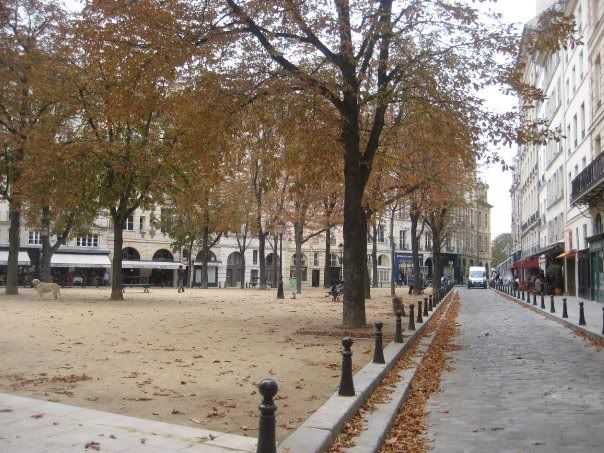 We crossed Pont Neuf, the oldest bridge in Paris dating to the medieval period, to the Île de la Cite. We meandered through the streets, peeking into shop windows and thouroughly enjoying the quiet parks. Finally, we visited the very tip of the île, a park called pl. Dauphine, before heading back to Sainte Chapelle to stand in line.
We crossed Pont Neuf, the oldest bridge in Paris dating to the medieval period, to the Île de la Cite. We meandered through the streets, peeking into shop windows and thouroughly enjoying the quiet parks. Finally, we visited the very tip of the île, a park called pl. Dauphine, before heading back to Sainte Chapelle to stand in line.
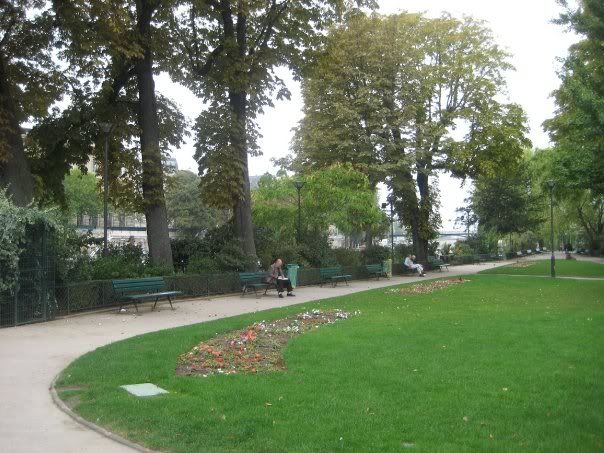
Sainte Chapelle was absolutely incredible, with its "light as a feather" Gothic architecture and four walls of nearly floor to ceiling stained glass telling the story of the Pentateuch. St. Louis built the chapelle to house the relics of the crown of thorns that Christ wore, which are now housed in Notre Dame. In stark contrast with the "Sun King" who built his chapel at Versailles in two levels so the court would always be worshipping him worshipping God, there is a hole in the wall of Sainte Chapelle through which you can see the private chapel where he and his family used to sit for Mass. There was no way to fully soak in the beauty of the windows.
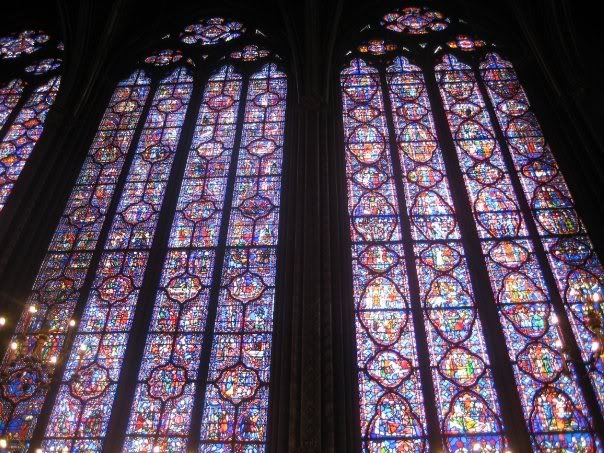 On our way our we stopped by the modern-day court of law, the Palais de Justis, where lawyers in black robes rushed about with briefcases and cell phones. I wish professionals were distinguished be such honors in the United States; only doctors of medicine wear special clothes. There is one large statue in the main hall of the Palais of a lawyer with a turtle, to symbolize the pace of the legislative process.
On our way our we stopped by the modern-day court of law, the Palais de Justis, where lawyers in black robes rushed about with briefcases and cell phones. I wish professionals were distinguished be such honors in the United States; only doctors of medicine wear special clothes. There is one large statue in the main hall of the Palais of a lawyer with a turtle, to symbolize the pace of the legislative process.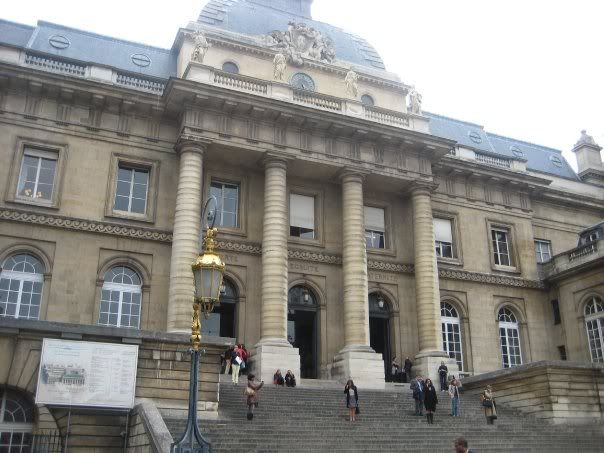 We walked past the Préfecture du Police on our way to la Crypte Archéologique outside of Notre-Dame. The crypt contains what is left of the Roman ruins of Paris, ruins of the medieval Norman city, and of St. Vincent de Paul's home for foundlings. One of the things that impressed me was the Roman presence in the city, marked by the majestic Roman baths. The power of the Roman Empire was incredible; it just fascinates me that you can see exactly the same style baths in England, France, and Italy amongst other places in Europe. Regardless, if you want a decent history of Paris from the Celtic tribe of Parisii, Clovis and the Normans up to the 17th century, the crypt is a fabulous place to start. It houses awesome little panoramas of the changing scenery of Paris over the centuries.
We walked past the Préfecture du Police on our way to la Crypte Archéologique outside of Notre-Dame. The crypt contains what is left of the Roman ruins of Paris, ruins of the medieval Norman city, and of St. Vincent de Paul's home for foundlings. One of the things that impressed me was the Roman presence in the city, marked by the majestic Roman baths. The power of the Roman Empire was incredible; it just fascinates me that you can see exactly the same style baths in England, France, and Italy amongst other places in Europe. Regardless, if you want a decent history of Paris from the Celtic tribe of Parisii, Clovis and the Normans up to the 17th century, the crypt is a fabulous place to start. It houses awesome little panoramas of the changing scenery of Paris over the centuries.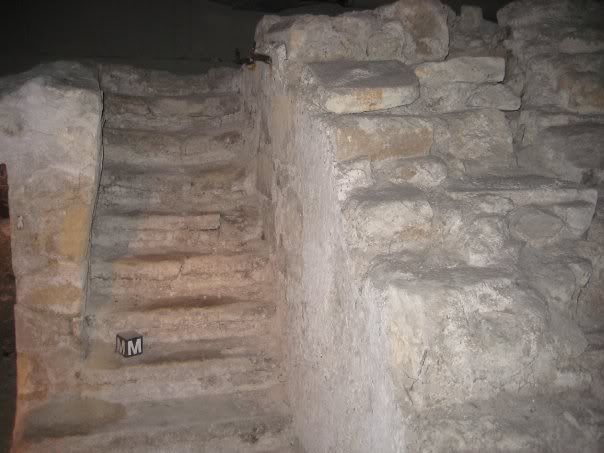 Notre-Dame itself was breathtaking. After spending so much time in England where the Catholic churches were either taken over by Protestants or are too poor to have centuries of dust cleaned off the walls, it was refreshing to see a living, breathing Catholic church in Europe. There were posters for the Year of the Priest along the side corridor, priests hearing Confessions in several languages, and worship continuing as usual despite thousands of visitors. After walking around to look at the place where Mommy was a Shrine-lurker in college, we stayed for Vespers and Mass.
Notre-Dame itself was breathtaking. After spending so much time in England where the Catholic churches were either taken over by Protestants or are too poor to have centuries of dust cleaned off the walls, it was refreshing to see a living, breathing Catholic church in Europe. There were posters for the Year of the Priest along the side corridor, priests hearing Confessions in several languages, and worship continuing as usual despite thousands of visitors. After walking around to look at the place where Mommy was a Shrine-lurker in college, we stayed for Vespers and Mass.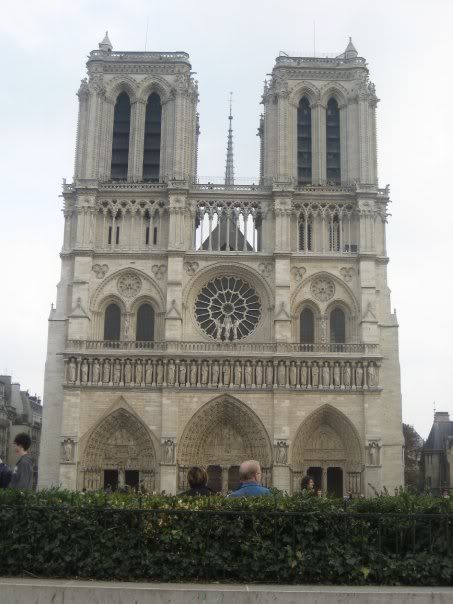
 We swung by the Hôtel Dieu, a huge public hospital, on our way to the metro. Back at the room, we enjoyed a baguette and cheese from the local cheese-shop (fromagerie) for dinner before falling asleep.
We swung by the Hôtel Dieu, a huge public hospital, on our way to the metro. Back at the room, we enjoyed a baguette and cheese from the local cheese-shop (fromagerie) for dinner before falling asleep.
1 comment:
How come I didn't realize you were doing this???
Post a Comment